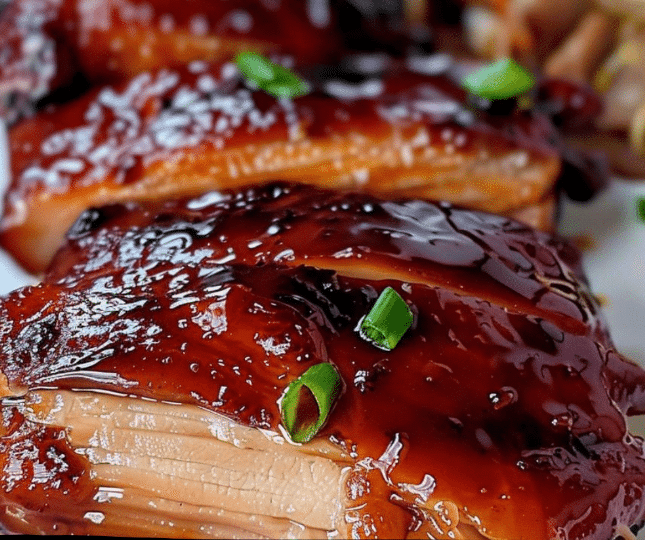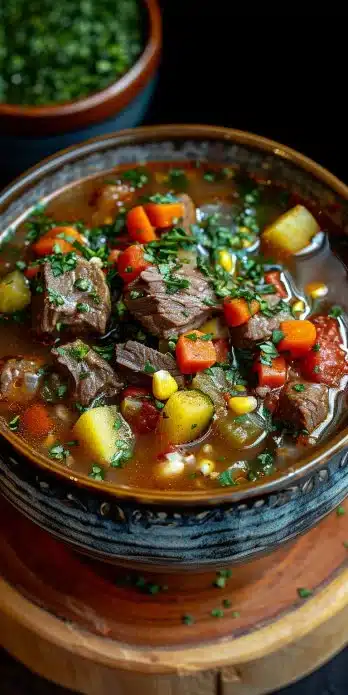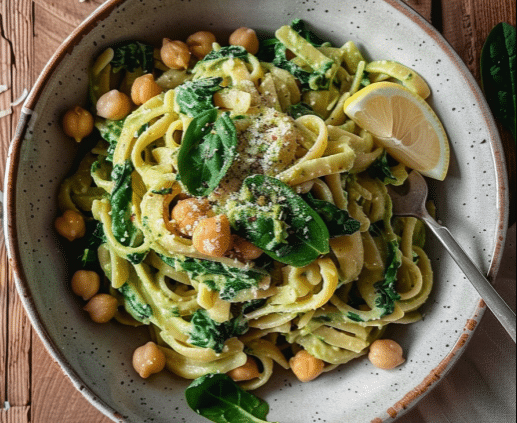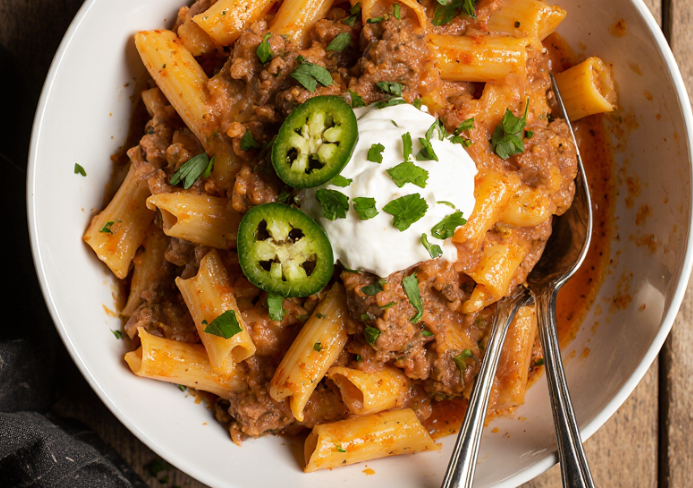Capirotada (Mexican Bread Pudding): A Sweet Tradition with Deep Roots
Capirotada, a classic Mexican bread pudding, is far more than a comforting dessert. It’s a dish steeped in Catholic symbolism, family heritage, and centuries of culinary evolution. Traditionally eaten during Lent, especially on Good Friday, capirotada carries with it layers of flavor and meaning.
Table of Contents
🌍 Origins of Capirotada: A Blend of Cultures and Faith
Capirotada originated in Mexico during the Spanish colonial era, with its culinary roots tracing even further back to Spain and Moorish cuisine. The technique of layering bread with sweet and savory ingredients, along with the use of aromatic spices, is believed to have been brought over by Spanish settlers.
This dish also has deep religious symbolism. According to the Smithsonian Institution, the ingredients of capirotada are said to represent elements of Christ’s crucifixion:
- Bread symbolizes the body of Christ.
- Clove sticks represent the nails.
- Cinnamon sticks resemble the wood of the cross.
- Piloncillo syrup stands for his blood.
🍞 Traditional Ingredients and Their Meanings
An authentic capirotada recipe uses simple, pantry-friendly items—each with purpose and significance. As shown in this authentic version by The Spruce Eats, these ingredients often include:
- Bolillo rolls (or other day-old bread)
- Piloncillo (Mexican raw cane sugar)
- Cinnamon sticks
- Whole cloves
- Raisins
- Shredded cheese (commonly Cotija or a mild melting cheese)
- Peanuts or almonds (optional)
- Butter
- Bananas, apples, or coconut in regional variations
Each family’s recipe may differ slightly, often passed down through generations as a cherished tradition.
👩🍳 How to Make Traditional Capirotada: Step-by-Step
Here’s a simplified recipe guide to preparing traditional capirotada:
🔹 Ingredients
- 4 bolillo rolls (sliced and left out to stale)
- 2 cups piloncillo, chopped
- 2 cups water
- 2 cinnamon sticks
- 4 cloves
- 1/2 cup raisins
- 1/2 cup grated cheese
- 1/4 cup chopped nuts
- 2 tbsp butter
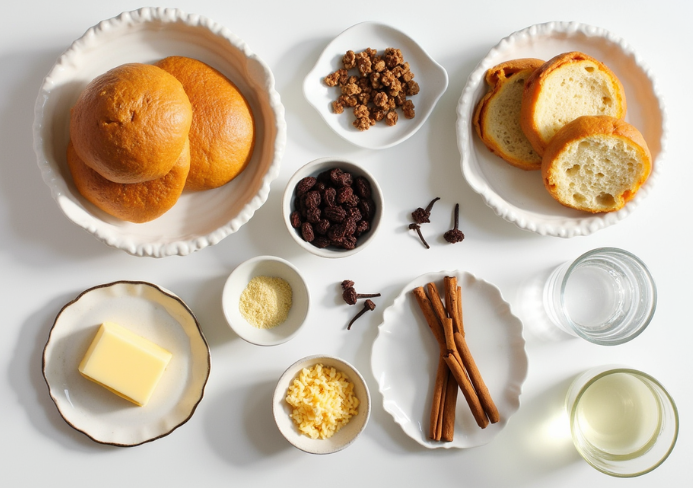
🔹 Instructions
- Prepare the syrup
In a saucepan, combine water, piloncillo, cinnamon sticks, and cloves. Simmer until reduced and slightly thickened. Strain the syrup to remove solids. - Toast the bread
Lightly butter and toast the bread slices in a skillet or oven until golden brown. - Layer the pudding
In a baking dish, layer:- Bread slices
- Raisins
- Nuts
- Cheese
Repeat until ingredients are used up.
- Pour syrup
Slowly drizzle the warm syrup over the layered ingredients, ensuring it’s evenly distributed. - Bake
Cover with foil and bake at 350°F (175°C) for 30–40 minutes until the dish is set and bubbling. - Cool and serve
Let it cool slightly. It can be served warm or cold depending on preference.
🌎 Variations Across Regions and Families
As with many traditional dishes, capirotada varies by region:
- Northern Mexico often includes dried fruits like apricots or pineapple.
- Southern Mexico may incorporate coconut, plantains, or chopped apples.
- Capirotada blanca omits the dark syrup and uses milk or cream instead.
- Vegan variations swap cheese for dairy-free alternatives and butter for coconut oil.
- Gluten-free versions use gluten-free bread.
Explore some lesser-known versions of this dish on TasteAtlas, where regional interpretations are celebrated.
⛪ When Is Capirotada Traditionally Eaten?
Capirotada is most commonly prepared during Lent, particularly for Good Friday, when Catholics abstain from eating meat. The dish serves as a filling, meatless meal that carries profound spiritual meaning.
Families across Mexico and the U.S. continue to make capirotada during this season, often gathering in kitchens to follow recipes passed down from abuelas.
🥗 Is Capirotada Healthy? A Nutritional Look
While delicious, capirotada is rich and sweet. Here’s a quick look at its nutritional profile:
- High in carbohydrates and sugars from bread and piloncillo
- Moderate amounts of protein from cheese and nuts
- Optional ingredients (like fruits and nuts) can boost its fiber and antioxidant content
Healthier Twists:
- Use whole wheat bread
- Reduce piloncillo or replace with agave nectar
- Choose low-fat cheese or vegan options
🇺🇸 Capirotada in Mexican-American Homes
In Mexican-American communities, capirotada plays a vital role in maintaining cultural identity. It often appears at Lenten potlucks, church gatherings, and family reunions. For many, the act of making this dish together becomes a living tribute to their heritage.
🍴 Serving & Storage Tips
Capirotada can be enjoyed warm, room temperature, or chilled. It’s commonly served:
- As a Lenten dessert
- For brunch during Holy Week
- Alongside coffee or hot chocolate
Storage:
- Store in an airtight container in the fridge for up to 5 days
- Reheat in the oven or microwave
- It can also be frozen for longer storage, though texture may change
❓ Frequently Asked Questions (FAQs)
What is capirotada made of?
Capirotada is made from toasted bread, piloncillo syrup, raisins, cheese, cinnamon, and cloves. Additional ingredients like nuts and fruit are often included.
Is capirotada sweet or savory?
While some regional versions may include savory elements, capirotada is typically sweet, thanks to its piloncillo syrup and dried fruits.
Can capirotada be made ahead or frozen?
Yes! It can be assembled in advance and baked the next day. You can also freeze it for later, though the texture may soften slightly upon thawing.
Why does capirotada have cheese?
Cheese adds a contrasting saltiness that balances the sweetness, creating a savory-sweet harmony unique to capirotada.
Is capirotada still popular today?
Absolutely. Both in Mexico and among Mexican-American families, capirotada remains a beloved tradition—shared, reinvented, and remembered across generations.
🌟 Final Thoughts: Capirotada as Heritage on a Plate
Capirotada is more than just a Mexican dessert—it’s a story told in layers. From its religious undertones to its evolving flavors across time and borders, this dish connects people to their faith, families, and food traditions.
So whether you’re preparing it for the first time or carrying on a generational recipe, each bite of capirotada tells a delicious tale of culture, remembrance, and love.
PrintCapirotada (Mexican Bread Pudding): A Sweet Tradition with Deep Roots
- Total Time: 1 hour
- Yield: 6 to 8 servings
- Diet: Vegetarian
Description
A classic and comforting version of Capirotada made with bolillo rolls, spiced piloncillo syrup, raisins, nuts, cheese, and a buttery finish — baked to golden perfection.
Ingredients
- 4 bolillo rolls, sliced and left out to stale
- 2 cups piloncillo, chopped
- 2 cups water
- 2 cinnamon sticks
- 4 cloves
- ½ cup raisins
- ½ cup grated cheese
- ¼ cup chopped nuts
- 2 tbsp butter
Instructions
- Prepare the syrup: In a saucepan, combine piloncillo, water, cinnamon sticks, and cloves. Simmer until reduced and slightly thickened. Strain to remove solids.
- Toast the bread: Lightly butter each bread slice and toast in a skillet or oven until golden brown.
- Layer the pudding: In a baking dish, layer bread slices, then raisins, nuts, and cheese. Repeat until all ingredients are used up.
- Pour the syrup: Slowly drizzle the warm syrup over the layers, ensuring it is evenly distributed and soaks through.
- Bake: Cover the dish with foil and bake at 350°F (175°C) for 30–40 minutes, until set and bubbling.
- Cool and serve: Let it cool slightly before serving. Enjoy warm or cold based on your preference.
Notes
You can use brown sugar if piloncillo is unavailable. Add shredded coconut, banana slices, or sweetened condensed milk for extra richness. Best enjoyed with a cup of café de olla.
- Prep Time: 20 minutes
- Cook Time: 40 minutes
- Category: Dessert
- Method: Baked
- Cuisine: Mexican


